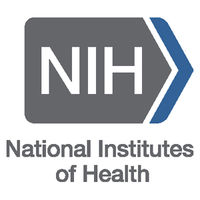预约演示
更新于:2025-05-26
ML216
更新于:2025-05-26
概要
基本信息
非在研机构- |
权益机构- |
最高研发阶段临床前 |
首次获批日期- |
最高研发阶段(中国)- |
特殊审评- |
关联
100 项与 ML216 相关的临床结果
登录后查看更多信息
100 项与 ML216 相关的转化医学
登录后查看更多信息
100 项与 ML216 相关的专利(医药)
登录后查看更多信息
12
项与 ML216 相关的文献(医药)2024-04-16·ChemMedChem
Challenges for the Discovery of Non‐Covalent WRN Helicase Inhibitors
Article
作者: Strang, Ross ; Bechter, Elisabeth ; Erdmann, Dirk ; Cortes-Cros, Marta ; Hamon, Jacques ; Schrapp, Maxime ; Möbitz, Henrik ; Meyerhofer, Marco ; Abdul Rahman, Wassim ; Mermet-Meillon, Fanny ; Fontana, Patrizia ; Zimmermann, Catherine ; Blank, Jutta ; Buhr, Sylvia ; Heuser, Alisa
Abstract:
The Werner Syndrome RecQ helicase (WRN) is a synthetic lethal target of interest for the treatment of cancers with microsatellite instability (MSI). Different hit finding approaches were initially tested. The identification of WRN inhibitors proved challenging due to a high propensity for artefacts via protein interference, i. e., hits inhibiting WRN enzymatic activities through multiple, unspecific mechanisms. Previously published WRN Helicase inhibitors (ML216, NSC19630 or NSC617145) were characterized in an extensive set of biochemical and biophysical assays and could be ruled out as specific WRN helicase probes. More innovative screening strategies need to be developed for successful drug discovery of non‐covalent WRN helicase inhibitors.
2023-07-06·Journal of translational medicine
PARP1 negatively regulates transcription of BLM through its interaction with HSP90AB1 in prostate cancer.
Article
作者: Huang, Mengqiu ; Guo, Yingchu ; Chen, Lin ; Ruan, Yong ; Xu, Houqiang
BACKGROUND:
Prostate cancer (PCa) is a prevalent malignant disease affecting a significant number of males globally. Elevated expression of the Bloom's syndrome protein (BLM) helicase has emerged as a promising cancer biomarker, being associated with the onset and progression of PCa. Nevertheless, the precise molecular mechanisms governing BLM regulation in PCa remain elusive.
METHODS:
The expression of BLM in human specimens was analyzed using immnohistochemistry (IHC). A 5'-biotin-labeled DNA probe containing the promoter region of BLM was synthesized to pull down BLM promoter-binding proteins. Functional studies were conducted using a range of assays, including CCK-8, EdU incorporation, clone formation, wound scratch, transwell migration, alkaline comet assay, xenograft mouse model, and H&E staining. Mechanistic studies were carried out using various techniques, including streptavidin-agarose-mediated DNA pull-down, mass spectrometry (MS), immunofluorescence (IF), dual luciferase reporter assay system, RT-qPCR, ChIP-qPCR, co-immunoprecipitation (co-IP), and western blot.
RESULTS:
The results revealed significant upregulation of BLM in human PCa tissues, and its overexpression was associated with an unfavorable prognosis in PCa patients. Increased BLM expression showed significant correlations with advanced clinical stage (P = 0.022) and Gleason grade (P = 0.006). In vitro experiments demonstrated that BLM knockdown exerted inhibitory effects on cell proliferation, clone formation, invasion, and migration. Furthermore, PARP1 (poly (ADP-ribose) polymerase 1) was identified as a BLM promoter-binding protein. Further investigations revealed that the downregulation of PARP1 led to increased BLM promoter activity and expression, while the overexpression of PARP1 exerted opposite effects. Through mechanistic studies, we elucidated that the interaction between PARP1 and HSP90AB1 (heat shock protein alpha family class B) enhanced the transcriptional regulation of BLM by counteracting the inhibitory influence of PARP1 on BLM. Furthermore, the combination treatment of olaparib with ML216 demonstrated enhanced inhibitory effects on cell proliferation, clone formation, invasion, and migration. It also induced more severe DNA damage in vitro and exhibited superior inhibitory effects on the proliferation of PC3 xenograft tumors in vivo.
CONCLUSIONS:
The results of this study underscore the significance of BLM overexpression as a prognostic biomarker for PCa, while also demonstrating the negative regulatory impact of PARP1 on BLM transcription. The concurrent targeting of BLM and PARP1 emerges as a promising therapeutic approach for PCa treatment, holding potential clinical significance.
2022-12-20·Proceedings of the National Academy of Sciences of the United States of America1区 · 综合性期刊
Synthetical lethality of Werner helicase and mismatch repair deficiency is mediated by p53 and PUMA in colon cancer
1区 · 综合性期刊
Article
作者: Opresko, Patricia L. ; Goel, Ajay ; Tong, Jingshan ; Lu, Xinyan ; Risnik, Denise ; Yu, Jian ; Jha, Anupma ; Zhang, Lin ; Hao, Suisui ; Lizardo, Darleny
Synthetic lethality is a powerful approach for targeting oncogenic drivers in cancer. Recent studies revealed that cancer cells with microsatellite instability (MSI) require Werner (WRN) helicase for survival; however, the underlying mechanism remains unclear. In this study, we found that WRN depletion strongly induced p53 and its downstream apoptotic target PUMA in MSI colorectal cancer (CRC) cells. p53 or PUMA deletion abolished apoptosis induced by WRN depletion in MSI CRC cells. Importantly, correction of MSI abrogated the activation of p53/PUMA and cell killing, while induction of MSI led to sensitivity in isogenic CRC cells. Rare p53-mutant MSI CRC cells are resistant to WRN depletion due to lack of PUMA induction, which could be restored by wildtype (WT) p53 knock in or reconstitution. WRN depletion or treatment with the RecQ helicase inhibitor ML216 suppressed in vitro and in vivo growth of MSI CRCs in a p53/PUMA-dependent manner. ML216 treatment was efficacious in MSI CRC patient-derived xenografts. Interestingly,
p53
gene remains WT in the majority of MSI CRCs. These results indicate a critical role of p53/PUMA-mediated apoptosis in the vulnerability of MSI CRCs to WRN loss, and support WRN as a promising therapeutic target in
p53
-WT MSI CRCs.
100 项与 ML216 相关的药物交易
登录后查看更多信息
研发状态
10 条进展最快的记录, 后查看更多信息
登录
| 适应症 | 最高研发状态 | 国家/地区 | 公司 | 日期 |
|---|---|---|---|---|
| 多发性骨髓瘤 | 临床前 | 法国 | 2016-12-02 | |
| 肿瘤 | 临床前 | 美国 | 2013-02-28 |
登录后查看更多信息
临床结果
临床结果
适应症
分期
评价
查看全部结果
| 研究 | 分期 | 人群特征 | 评价人数 | 分组 | 结果 | 评价 | 发布日期 |
|---|
No Data | |||||||
登录后查看更多信息
转化医学
使用我们的转化医学数据加速您的研究。
登录
或

药物交易
使用我们的药物交易数据加速您的研究。
登录
或

核心专利
使用我们的核心专利数据促进您的研究。
登录
或

临床分析
紧跟全球注册中心的最新临床试验。
登录
或

批准
利用最新的监管批准信息加速您的研究。
登录
或

特殊审评
只需点击几下即可了解关键药物信息。
登录
或

Eureka LS:
全新生物医药AI Agent 覆盖科研全链路,让突破性发现快人一步
立即开始免费试用!
智慧芽新药情报库是智慧芽专为生命科学人士构建的基于AI的创新药情报平台,助您全方位提升您的研发与决策效率。
立即开始数据试用!
智慧芽新药库数据也通过智慧芽数据服务平台,以API或者数据包形式对外开放,助您更加充分利用智慧芽新药情报信息。
生物序列数据库
生物药研发创新
免费使用
化学结构数据库
小分子化药研发创新
免费使用

